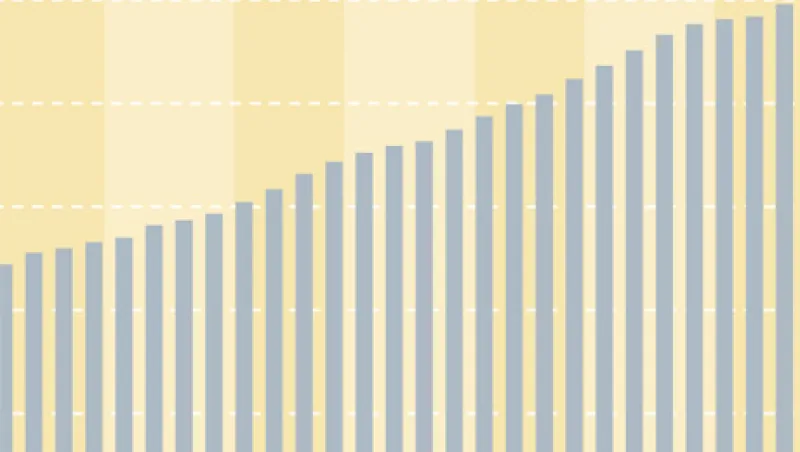For Landmark Partners, these difficult economic times are the best of times. The Simsbury, Connecticut–based firm, which specializes in buying secondary partnership interests, is on the road attempting to raise as much as $3 billion, on top of the more than $9 billion it has deployed over the past two decades. Indeed, as the market for secondaries reaches record numbers — it is expected to top last year's levels — Landmark expects to be a big winner.
This week, Detroit's $2 billion General Retirement System will conduct interviews with Landmark and New York–based secondary fund manager Lexington Partners as it looks for a firm to run a $15 million secondaries allocation, according to Detroit's senior investment officer Ryan Bigelow.
By pension fund standards, $15 million is a pittance. But as large banks rush to sell assets to meet heightened capital requirements, large investors streamline their investment portfolios and distressed pension funds such as Detroit's look to salvage some of their assets to meet current obligations, billions of dollars are in play. And firms that buy secondaries, such as Landmark and Lexington, have become key players.
Part of the attraction of a secondaries fund is that it can help asset managers realign their goals without disrupting the portfolio. Indeed, as institutional investors cope with overinvestment in alternative assets during the past decade and poor returns, there's plenty of need for realignment.
"Our investors are seeking a number of benefits: attractive risk-weighted returns, a smoothing of the J-curve effect on cash flows, portfolio diversification, and insight into individual GPs," says Frank Borges, managing partner and the founder of Landmark. But the interest in secondaries also marks the growing shift by many investors away from long-term assets into shorter term, less risky investments, he and others say.
"It's all about shortening the J-curve," says New York–based investment consultant Tom Darling, referring to the tendency for private equity funds to deliver the bulk of their returns in the latter years of their life cycle. "When institutional and high net worth investors made commitments in the post-2000 crash, they did not expect that among the 15,000 private equity funds in the world, less than 20 percent of them would have returned their capital by the end of their investing period, be it six or seven years," he says. That creates an opening for a secondary market where investors can "buy into growth company portfolios at par or a discount but three to five years into the company development life cycle," adds Darling, who himself packages secondaries of emerging market funds.
"The secondary market is characterized by price and information inefficiencies, which enable good secondaries funds to generate strong returns," says Jeremy Coller, CIO of Coller Capital In London. Because secondary funds can invest in mature, substantially invested portfolios, they should be able to generate attractive returns with a substantially reduced risk, explains Coller. Nonetheless, increased competition for the assets can only raise the price that buyers must pay. That in turn is bound to put pressure on returns, adds New York's Darling.
The boom in secondaries isn't about to subside. The changing regulatory landscape for financial institutions — particularly banks, investment banks and insurance companies — has motivated many to sell fund interests on the secondary market. According to Preqin Capital, a leading provider of alternative assets data, banks have in excess of $100 billion of private equity assets still on their books; $30 billion of it could be disposed in the secondary market. Many insurance companies are also expected to reduce their exposure to private equity, because the asset class will become more expensive to hold under the European Union Solvency II directive.
Institutional investors are also selling off some of their private equity holdings. In April, Connecticut treasurer Denise Nappier announced that her state would sell more than $400 million in long-term private equity assets to pay for benefits owed to retired workers. Three months later Canada's Public Service Pension Investment Board put up a $1 billion portfolio of private equity funds for sale.
In 2012, secondary funds raised a record $21 billion in capital, according Preqin, while the volume of secondary transactions exceeded $25 billion, the highest total since 2009. This year's volume — of both funds raised and secondary transactions — is likely to exceed 2012's.
That is good news for Landmark, which buys mostly from large limited partners and big financial institutions and which has diversified its portfolio of secondaries to include venture capital, buyouts and real estate. Landmark also sold a 55 percent stake in its firm for $171.5 million to Religare Global, a subsidiary of Religare Enterprises, an emerging markets financial services group based in India.
Landmark does not have the field all to itself. There are an estimated 40 or more institutions — ranging from specialist firms such as Coller Capital and Lexington to investment advisers such as Hamilton Lane — that now trade in secondaries. Just last year Paris-based AXA Financial raised a record $7.1 billion secondary fund. Along with Landmark, Dover Street Capital, Vintage Fund, Paul Capital Partners, and NB Secondary Opportunities Fund also are in the market with the goal of raising a combined $13 billion.
The key, of course, is the ability to buy private equity portfolios at a significant discount to their net asset value, though if the gap is too large it acts as a deterrent to many sellers coming to the market. In recent years, according to Preqin, there has been a steady reduction in the NAV discounts, which has coincided with increased levels of secondary market activity and investor interest. That bodes well for a market that is poised to reach record levels in 2013, the market tracker predicts.
Read more about asset management.






